Grace was a 1990s British dance music act, consisting of the DJs Paul Oakenfold and Steve Osborne and the jazz singer Dominique Atkins. The group's first single, "Not Over Yet", had lead and backing vocals by the original frontwoman Patti Low. Atkins recorded her own lead vocals for "Not Over Yet" when it was included as the first track on the group's only album If I Could Fly.

"Night Fever" is a song written and performed by the Bee Gees. It first appeared on the soundtrack to Saturday Night Fever on RSO Records. Producer Robert Stigwood wanted to call the film Saturday Night, but singer Robin Gibb expressed hesitation at the title. Stigwood liked the title Night Fever but was wary of marketing a movie with that name. The song bounded up the Billboard charts while the Bee Gees’ two previous hits from Saturday Night Fever soundtrack were still in the top ten. The record debuted on the Billboard Hot 100 Chart at #76, then leaped up 44 positions to #32. It then moved: 32–17–8–5–2–1. It remained at #1 for eight weeks, and ultimately spent 13 weeks in the top 10. For the first five weeks that "Night Fever" was at #1, "Stayin' Alive" was at #2. Also, for one week in March, Bee Gees related songs held five of the top positions on the Hot 100 chart, and more impressively, four of the top five positions, with "Night Fever" at the top of the list. The B-side of "Night Fever" was a live version of "Down the Road" taken from the Bee Gees 1977 album, Here at Last... Bee Gees... Live.

"Stayin' Alive" is a song written and performed by the Bee Gees from the Saturday Night Fever motion picture soundtrack. The song was released in 1977 as the second single from the Saturday Night Fever soundtrack. The band co-produced the song with Albhy Galuten and Karl Richardson. It is one of the Bee Gees' signature songs. In 2004, "Stayin' Alive" was placed at No. 189 on the list of Rolling Stone's 500 Greatest Songs of All Time. The 2021 updated Rolling Stone list of 500 Greatest Songs placed "Stayin' Alive" at No. 99. In 2004, it ranked No. 9 on AFI's 100 Years...100 Songs survey of top tunes in American cinema. In a UK television poll on ITV in December 2011 it was voted fifth in "The Nation's Favourite Bee Gees Song".
Jam & Spoon were a German electronic music duo formed in 1991 in Frankfurt. The group consisted of composers and producers Rolf Ellmer and Markus Löffel. They also worked under the pseudonyms Tokyo Ghetto Pussy, Storm and Big Room. Under these pseudonyms, the credits on the albums are listed as Trancy Spacer and Spacy Trancer.
N-Trance are a British electronic music group who were formed by Kevin O'Toole and Dale Longworth in 1991. The group is known for their European hit songs "Set You Free" and "Electronic Pleasure", and their covers of the 1970s disco songs "Stayin' Alive", "D.I.S.C.O.", "Shake Ya Body", and "Da Ya Think I'm Sexy?". They had 14 charting singles in the UK during 1994–2004.

"Da Ya Think I'm Sexy?", also written "Da' Ya' Think I'm Sexy", is a song by British singer Rod Stewart from his ninth studio album, Blondes Have More Fun (1978). It was written by Stewart, Carmine Appice and Duane Hitchings, though it incorporates the melody from a song "Taj Mahal" from Jorge Ben Jor and the string arrangement from the song "(If You Want My Love) Put Something Down On It" by Bobby Womack.

"Be My Lover" is a song recorded by German Eurodance group La Bouche and released in March 1995 as the second single from their debut album, Sweet Dreams (1995). The song was written by group members Melanie Thornton and Lane McCray with Uli Brenner and Gerd Amir Saraf, who co-produced it with Frank Farian. It remains their most successful song, alongside "Sweet Dreams", and was a worldwide hit. In Europe, it was a number-one hit in the Czech Republic, Germany, Hungary, Romania, and Sweden, as well as on the Eurochart Hot 100. In the US, the single reached number five on the Cash Box Top 100, number six on the Billboard Hot 100 and also topped the Billboard Hot Dance Club Play chart for two weeks in December 1995. To date, it has sold six million copies worldwide. La Bouche won the 1996 Echo award in Germany in the category for Best Dance Single with "Be My Lover", and the ASCAP award in the US for the 'Most Played Song in America'. It was dubbed into many megamix tracks and has had several remix versions.

"One Love" is a song by British electronic music act the Prodigy, released on 4 October 1993 as the first single from their second album, Music for the Jilted Generation (1994). The song peaked at number eight on the UK Singles Chart and number five on the UK Dance Singles Chart. It was also a top 30 hit in Sweden and Switzerland.

Electronic Pleasure is the first full-length studio album released by British electronic music group N-Trance. It was released in November 1995 and the U.S. on 1996.

"D.I.S.C.O." is a song by the French band Ottawan, written by Daniel Vangarde and Jean Kluger and produced by Daniel Vangarde. Ottawan originally recorded it in French.
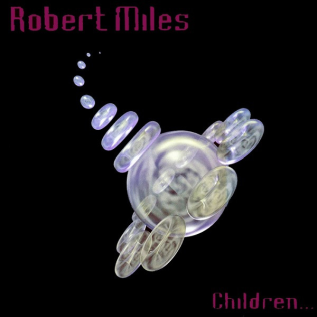
"Children" is an instrumental composition by Italian composer Robert Miles. It was first released in Italy in January 1995 as part of the EP Soundtracks on Joe Vannelli's DBX label, but it did not chart. Vannelli brought the track to a nightclub in Miami where it was heard by Simon Berry of Platipus Records. Berry worked with Vannelli and James Barton to release the composition in November 1995 as the lead single from his debut album, Dreamland (1996). "Children" was certified gold and platinum in several countries and reached number one in more than 12 countries; it was Europe's most successful single of 1996.

"French Kiss" is a song by American DJ and record producer Lil Louis that became a European and American hit in 1989, despite being banned by the BBC. The song also was a hit in clubs around the world and it spent two weeks at number one on the US Billboard Dance Club Songs chart in October 1989. It became a crossover pop hit, peaking at number 50 on the Billboard Hot 100. It was also a mainstream pop hit in the United Kingdom, where it peaked at number two in August 1989.
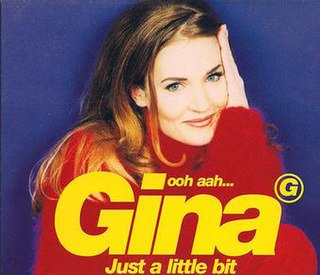
"Ooh Aah... Just a Little Bit" is the debut solo single of Australian singer Gina G. The song was written by British songwriters Simon Caldwell and Steve Rodway, and released on 25 March 1996 as the first single from her debut album, Fresh! (1997). It reached No. 1 on the UK Singles Chart almost two months later and was also a number-one hit in Israel, as well as in Scotland. In the US, the song peaked at No. 12 on the Billboard Hot 100. The song was the United Kingdom's entry in the Eurovision Song Contest 1996, held in Oslo, Norway, where it finished in eighth place. It was successful on the charts in Europe, Australia and the US, and was nominated for the Grammy Award for Best Dance Recording.

"Seven Days and One Week" is a song by Italian-French electronic music act B.B.E. It was released in July 1996 as the lead single from their debut album, Games (1996). As a representative of the short-lived dream house sound, the song became a top 10 hit worldwide, most notably reaching number-one in Spain, number two in Belgium, Finland, Ireland and Italy, and number three in Germany, the Netherlands and the United Kingdom. On the Eurochart Hot 100, it also peaked at number three.
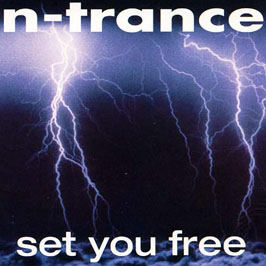
"Set You Free" is a song written and recorded by English rave band N-Trance, featuring vocals from English singer Kelly Llorenna. It was first released as a white label record in 1992, then officially released as a single in April 1994, just making the UK top 40 at No. 39. A re-release in January 1995 was much more successful, peaking at No. 2 in the UK. Same year, it was included on the band's debut album, Electronic Pleasure (1995). Later, it was remixed and re-released in 2001, this time reaching No. 4. Its music video was directed by prolific music video director Steve Price.
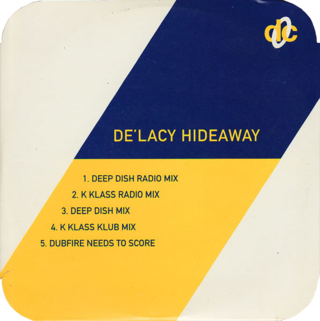
"Hideaway" is a song by American house music group De'Lacy, featuring vocals by Rainie Lassiter. It is the group's most successful single and is written by Kevin Hedge and Josh Milan, and produced by Blaze. The Deep Dish remix peaked at number-one in Italy. It also reached number nine in the UK and number 38 on the Billboard Hot Dance Club Play chart in the US. The song has been remixed and re-released several times. A remixed version, called "Hideaway 1998", which featured a mix by Nu‑Birth, peaked at number 21 in 1998. The song was released a third time in 2006 and reached number 82 in the Netherlands.

"Boombastic" or "Mr. Boombastic" is a song by Jamaican musical artist Shaggy, released on June 5, 1995 as the second single from his third studio album, Boombastic (1995). After being used in an ad for Levi's, it achieved commercial success in many countries, including Ireland, UK, Sweden, New Zealand, and Australia, where it topped the singles charts. It spent a week at number one on the US Billboard R&B chart, and a similar stint atop the UK Singles Chart. It also reached number three on the Billboard Hot 100. The track contains a sample from King Floyd song "Baby Let Me Kiss You". A remix featuring Sting International, which features a sample of Marvin Gaye's "Let's Get It On", was released in January 1996. The latter is featured on some versions of the Boombastic album as a bonus track.
This is the discography of the British electronic music group N-Trance. The band has released two studio albums, one compilation album and seventeen singles. After originally being signed by 380 Records for a year, they signed to the independent dance record label All Around the World (AATW) in 1992. Most of their work is released by AATW in the United Kingdom, but they have also been released in Europe, the United States and the rest of the world.
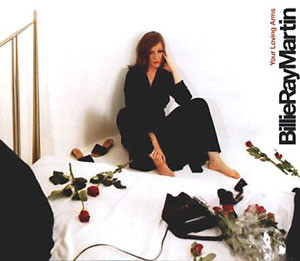
"Your Loving Arms" is a song by German singer Billie Ray Martin, the former lead singer of Electribe 101. It was released by Magnet and Sire in October 1994 as the first single from the singer's debut solo album, Deadline for My Memories (1995). Written by Martin and David Harrow, it is known to be one of her most notable singles. It was produced by English electronic dance group the Grid and was originally released on October 31. The track found greater chart success in 1995, when it peaked at number one in Italy and on the US Billboard Hot Dance Club Songs chart, and number six on the UK Singles Chart. On the Eurochart Hot 100, it reached number 21. There were made two different music videos for the song. Mixmag featured "Your Loving Arms" in its "100 Greatest Dance Singles of All Time" list in 1996.

"Le Dormeur" is a 1991 electronic song recorded by Belgian act Pleasure Game. Written and composed by Bruno Van Garsse, Benoît Marissal, Jacky Meurisse and Michel de San Antonio, it was released in the summer of 1991 as the band's debut single from the album Le Dormeur on which it was the second track. It became a hit in France and the Francophone part of Belgium where it became a top ten hit.
















